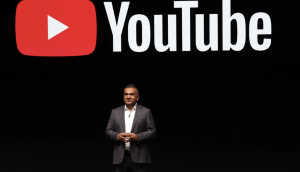The third and final phase of a testing process by the Media Rating Council (MRC) to reconcile differences in measurement results in digital is over, and the results are not entirely discouraging.
The final report is a result of analysis of about four billion served ad impressions across site, placement and creative types, and includes both display and video ads. About 63% of the campaigns analyzed revealed an acceptable – less than 10% – difference between each of the vendor’s count of viewable impressions, according to the MRC, which conducted the test as part of its efforts to develop a consistent industry-wide standard.
MRC-accredited vendors have been collaborating with industry bodies like the Interactive Advertising Bureau (IAB) as well to develop guidelines to put publishers, agencies and advertisers on the same plane and enable brands to ensure that their budgets are being fairly spent. Since 2011 the Association of National Advertisers, the American Association of Advertising Agencies and the IAB, all based in the U.S. – have been advocating for improved global measurement standards when they collectively launched 3MS (Making Measurement Make Sense).
Current industry standards are that a desktop display ad can be counted as viewable if at least 50% of the advert’s pixels are on screen for one second or more, and a video ad is counted if 50% of its pixels can be seen for two consecutive seconds or more. Larger desktop ad units (970 x 250 pixel display or more) must have 30% of pixels in view for one second to be counted. In December 2014, the IAB recommended that since 2015 is the year of transition, campaigns should achieve 70% viewability.
The process is in the best interests of the entire industry, says Sonia Carreno, president, IAB Canada. “[The MRC] is trying to communicate as best as possible that this is a work flow issue rather than a technology issue or a political issue,” she says. “It turns into a heated debate, but we need come together as a united front and start collaborating.”
The MRC report attributes 54% of discrepancies in reporting, for instance, to differences in measuring viewability in desktop over mobile. With a consumer and ad shift towards mobile, that discrepancy has increased, and the MRC advocates a segregation between the two, as well as separate guidelines, which it will roll out shortly.
The third phase of this reconciliation process involved the alignment of results from MRC-accredited vendors that spanned campaign data for four billion served ad impressions across display, creative and placement types. The results show that there was more than 10% discrepancy among vendors counts in about 37% of campaigns with more than 100,000 viewable impressions taken into consideration – with the average weighted difference at 34%.
Testing from smaller campaigns (fewer than 100,000 viewable impressions) revealed even greater differences in numbers.
In an earlier note, the MRC had already addressed the issue of reporting on campaigns with multiple ad units. Despite setting the standard on this, vendors have continued to measure ads as a package instead of as individual pieces of the package. Every ad should be measured individually, according to the MRC standard developed after the second phase.
A new finding from the third report was that some vendors were measuring traffic served from campaigns by other ad servers as well as their own. MRC plans to address this issue.
Carreno describes the current move as a sign of the industry’s acceptance of the need for standards. It’s not clear, she says, whether some vendors don’t understand viewability measurement or if they have just been slow to accept the changes in standards. The statistical weight of the study, however, is akin to placing the industry in the third inning of a baseball game, she says.
“Publishers are coming to the table with this notion that this is something that we can work with,” she says. “In our industry historically, guidelines work, and we need them in the industry not just from a viewability and fraud perspective but also from a policy standpoint. We need to show that this industry is self-governing and that we are able to overcome issues like this together.”
The MRC will issue updates to its guidelines within 30 days and all accredited vendors will have to adopt those standards.
Image courtesy of Shutterstock























